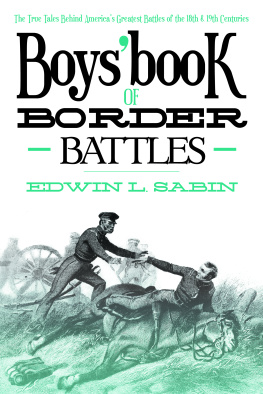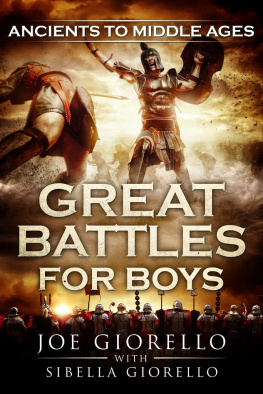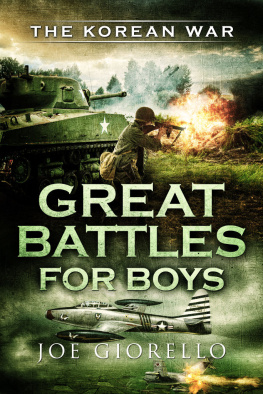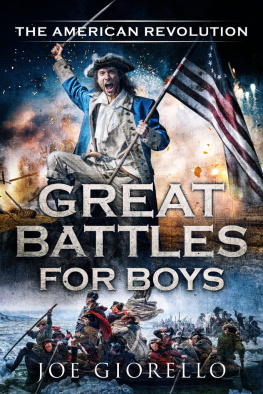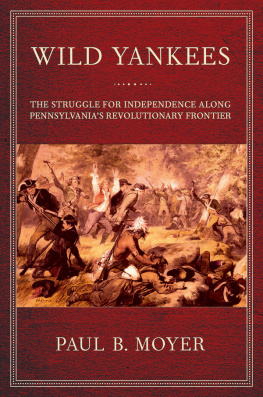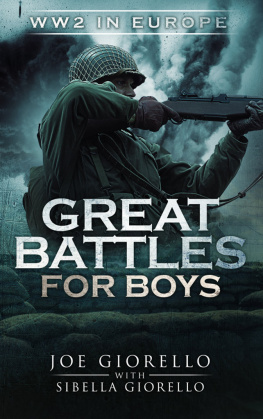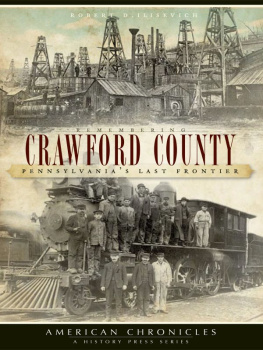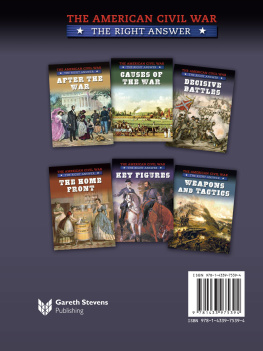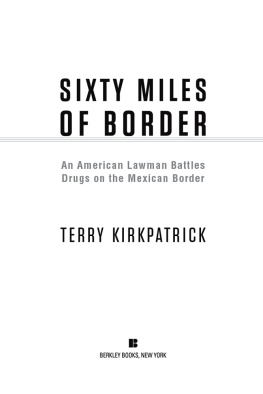BOYS BOOK OF
BORDER BATTLES
The True Tales Behind Americas Greatest Battles of the 18th and 19th Centuries
BY
EDWIN L. SABIN
Author of Boys Book of Indian Warriors, Boys Book of Frontier Fighters, etc.


Skyhorse Publishing
Other Books by
EDWIN L. SABIN
Uniform with this Volume
Boys Book of Indian Warriors
Boys Book of Frostier Fighters
Copyright 2013 by Skyhorse Publishing
Originally published in 1918 by George W.Jacobs SC Company
The stories included in this book reflect the attitudes of their times and do not necessarily represent the views or opinions of Skyhorse Publishing, Inc.
All Rights Reserved. No part of this book may be reproduced in any manner without the express written consent of the publisher, except in the case of brief excerpts in critical reviews or articles. All inquiries should be addressed to Skyhorse Publishing, 307 West 36th Street, 11th Floor, New York, NY 10018,
Skyhorse Publishing books may be purchased in bulk at special discounts for sales promotion, corporate gifts, fund-raising, or educational purposes. Special editions can also be created to specifications. For details, contact the Special Sales Department, Skyhorse Publishing, 307 West 36th Street, 11th Floor, New York, NY 10018 or info@skyhorsepublishing.com.
Skyhorse and Skyhorse Publishing are registered trademarks of Skyhorse Publishing, Inc., a Delaware corporation.
Visit our website at www.skyhorsepublishing.com.
10 9 8 7 6 5 4 3 2 1
Library of Congress Cataloging-in-Publication Data is available on file.
ISBN: 978-1-62087-158-4
Printed in the United States of America
Come Peace, not like a mourner bowed
For honor lost and dear ones wasted,
But proud, to meet a people proud,
With eyes that tell of triumph tasted.
........
Come, while our Country feels the lift
Of a great instinct shouting Forwards,
And knows that Freedoms not a gift
That tarries long in hands of cowards.
JAMBS RUSSELL LOWELL.
FOREWORD
In the United States of North America there have been several great battle-fields, each much larger than the battle-field of France. The first was that of the Ohio River countrythe Valley of the Beautiful River which drains Ohio, Kentucky, Indiana, West Virginia, and western Pennsylvania, Another, yet larger, was that of the plains and mountains West, extending from Mexico to Canada, and from the Mississippi to the Rockies.
In the Ohio Valley the Shawnees, the Miamis, the War Delawares, the Mingo Iroquois, the Wyandots fought hard to keep the white man out. In the Far West and Southwest the Blackfeet, the Sioux, the Cheyennes, the Kiowas, the Comanches and the Apaches fought equally hard for the same purpose. Boys Book of Indian Warriors and Boys Book of Frontier Fighters have told of these and other combats when the red Americans tried to stand off the white Americans,
But both battle-fields saw wars of white and white as well as wars of white and red. In the Ohio Valley the American colonists helped their mother country, England, against the Frenchand the French lost that region. And in the Southwest the United States fought Mexico.
Boys Book of Border Battles is therefore white and red. The two other books described mainly the adventures of chiefs, warriors, pioneers and scouts. This third book is more an American soldier book, of organized fighting on American soil by militia, volunteers, and the regulars of the old army the army in blue instead of khaki and olive drab, which bore the flag from east to west, and broadened the trails of peace.
CONTENTS
LIST OF ILLUSTRATIONS
Messages from the Enemy
On the Trail of the Dog Soldiers
BOYS BOOK OF BORDER BATTLES
CHAPTER I
GEORGE WASHINGTON STANDS FAST (1754)
THE AFFAIR OF THE GREAT MEADOWS
N OW in the middle of the century which opened with the year 1700 the vast red-man territory stretching from the Allegheny Mountains of Virginia and Pennsylvania to the Mississippi River was claimed by three peoples: the English, the French, and the Indians. And the arguments were these:
England had planted colonies on the Atlantic coast; she said that by a treaty the Iroquois or Six Nations of New York had sold all the country west of the Alleghenies to her provinces of Pennsylvania, Virginia and Maryland. This, the Six Nations had asserted, is our empire. We have conquered it. The other Indians living there do so because we permit them.
France said that when her Marquette and LaSalle explored the Mississippi River and claimed it for France, they included the whole country watered by all the rivers flowing into the Mississippi from the east and from the west. This was another large bargain.
The Indians said that the Iroquois had lied; they had not owned the lands of the Ohio Valley. These belonged to the tribes living upon them. Let the French stay in Canada; let the English stay east of the mountains; the Indians would keep the Ohio Country.
The French were more popular, but the English appeared to be the strongerand it is Indian policy to side with the stronger party, so as to get the spoils of war. Therefore when in the summer of 1749 the Wyandots, the Shawnees, the Delawares, the Mingos (who were roving bands of Iroquois), saw a large detachment of French soldiers descending along the River Ohio, burying leaden plates at the mouths of the streams, tacking the arms of France to the trees, and warning English traders to leave at once, they sent messages to the governors of Pennsylvania, New York and Virginia.
The French mean to steal the country from us. We ask our brothers the English for protection.
At this time there were no white settlements west of the Allegheny Mountains, but the province of Virginia was supposed to extend westward even to the Mississippi. At least, it reached to the Ohio River and included southwestern Pennsylvania. In reply to the Indians, Governor James Hamilton of Pennsylvania dispatched Trader George Croghan, with presents and treaty talk. To spy out a tract for settlement near the Ohio and to encourage the Indians with friendship words, the Ohio Company of Virginia dispatched the pioneer surveyor Christopher Gist of the Yadkin River, North Carolina.
The Ohio Company had been formed by Lawrence and Augustine Washington (George Washingtons elder brothers), several other Virginia and Maryland planters, and Merchant John Hanbury of London, to settle five hundred thousand acres of land granted them by the king of England, at the Ohio River west of the mountains.
Trader Croghan and Surveyor Gist left, the one from the north, the other from the south, in the same month, October, 1750.
They traveled, sometimes meeting, clear into western Ohio. The Indians received them well indeed; there were councils and feasts; the Miamis of Pickawillanee town in western Ohio refused some French whiskey and tobacco, and sent four French Ottawas home weeping with sorrow. All the tribes promised to attend a great council to be held at Logstown, beside the Ohio River fourteen miles below the forks where the Monongahela and Allegheny Rivers join to form the Ohio.
Logstown was the town of old Half-King Tanacharison, chief of the Mingo Senecas. He was called the half-king because the people whom he ruled were subjects of the head chief of the Six Nations.
The treaty council was held with the Ohio Country Indians at Logstown. The Six Nations themselves did not come. They haughtily announced:

